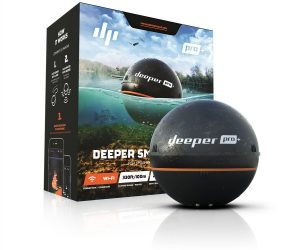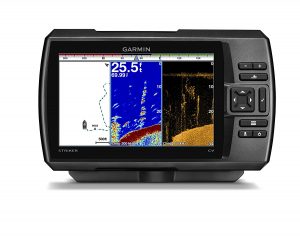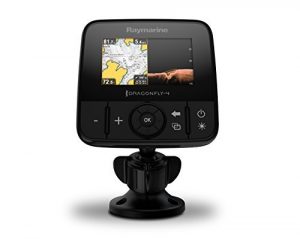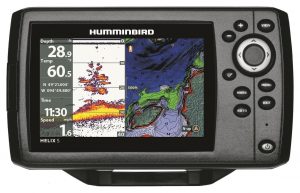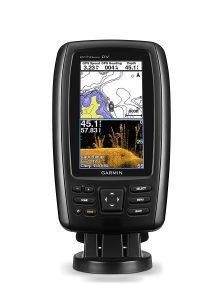Fishing all day long without any success and changing multiple fishing spots is the worst experience you can have. Fortunately, technology makes it possible to spot fish without casting 1.000 to get a single bite. Most anglers, experienced or newbies, are probably familiar with these devices, but finding the best fish finders can be quite tricky!
The rapid technology development has enabled the numerical analysis of the depth, as well as accurate fish detection. You can see all these information on a small display! What is not to love?
Firstly, you should learn the basic philosophy of fish finders and understand some basic features. Finding the best device depends on many factors, but generally speaking it depends on you and on your fishing needs. In addition, fish finders are suitable for small boats, big boats, medium size boats and kayaks of course!
We know the “struggles” of the modern angler and compiled this helpful guide to help you find the best fish finders on the market.
Let’s dive into the mysterious Fish Finder World!
Basic Characteristics: Let’s Do Some Science
All anglers share the same problems!
- Detect fish (the perfect fishing spot)
- Make them bite
- Land them
The fish finder solves the first basic problem. It is also called depth finder and it uses sound waves in order to estimate the depth. It consists of a main unit (display) and transducer.
When a sound wave hits an object, it returns to the transducer (also called eye) and “translates” it to an electrical signal which is actually the basic information which you see on the display.
Moreover, there are two types of sonars, the energetic and the passive, but we are going to talk only about energetic sonars. Passive sonars are used by the military and they do not emit sound waves.
The transducer is always in the water and it is the sensor which converts the signal. Well, the main-central unit emits a high-voltage electrical signal and the transducer creates a “pulse”. This pulse vibrates the water molecules and produces sound waves! The whole concept looks similar to the system of the common sound speaker.
What Frequency Should I Use?
Single, dual, multiple and broadband CHIRP are the most common frequencies and they range from 50 up to 200kHz. It goes without saying that there are some fish finders which operate other frequencies like 15kHz or even 400kHz honestly, they are no really common.
If you don’t know which frequency to use and when, please continue reading this section. Generally speaking, high frequencies like 200kHz are used in shallow waters and they will give you a better resolution. If you are trolling with your boat or kayak especially in shallow waters, a higher frequency has a better penetration into the water.
On the other hand, low frequencies like 50kHz are ideal for deep waters, but the resolution will not be sharp. To sum up, high frequencies will show you even the small rocks on the sea bed and small fish, but this works only for shallow waters.
If you want to cover more area and deeper waters, please use low frequencies. The table below summarizes the basic concept.
| High Frequencies | Low Frequencies |
| · Great Resolution | · Poor Resolution |
| · Shallow Waters | · Deep Waters |
| · Details | · Wider Area Coverage |
How to Choose A Kayak Fish Finder
Undoubtedly, kayak fishing is a sport that gained in popularity the last ten years. The benefits of kayak fishing are numerous and you can combine kayaking and fishing! So, you are a kayak fishing enthusiast and you see all these boats (small or big size) equipped with cutting-edge sonars and fish finders.
You have nothing to be jealous of! You can have your own fish finder, because there are many devices on the market suitable for your vessel! But, which is the best depth finder for you? Let’s find out!
Why Do You Need a Fish Finder?
- Locate fish easily
- Find your baitfish
- Determine the water depth and temperature
- Bottom Structure
- Super easy kayak mount
As you can see, this device is absolutely necessary for every angler. Many people say that fish finders are quite big, but fortunately this perception changed many years ago. Instead of installing a common device, you can just choose a portable fish finder.
Firstly, the first thing you should seriously take into consideration is the place you are going to fish in. If you are going to fish in deep waters, deep lakes or reefs, you probably need a good fish finder with GPS and CHIRP.
Another thing that you should look for is the transducer mount. Most transducer have a special mount for kayaks and others have a special ring which you can attach on your electrical trolling motor.
Additionally, since you have a narrow small vessel, the unit should not be big so you can attach easily on your kayak.
Moreover, many fish finders require the use of a 12V battery. Your kayak must have a space or pocket where you can place your battery. Of course, you can put the battery in an airtight plastic box and drill some holes for the cables, but we do not recommend it.
The location plays an important role when it comes to selecting a good fish finder. Furthermore, you should know that some displays are constructed to be used in harsh weather environments like fog or rain.
Easy Kayak Transducer Mounts for Every Kayak
So, you bought a fish finder and cannot wait to take it on the water? Wait! Do not forget your transducer! The transducer is the “eye” of your boat. Here are some easy ways to mount it.
Kayaks are usually made of plastic or fiberglass and there are many ways to mount the transducer on your kayak. If you have an inflatable kayak the only way is to attach it with a strap.
1) Use the Scupper Hole: The easiest way is to take advantage of the drain hole. There are some special mounts available on the market and they are quite affordable. In general, the scupper hole mount system consists of a long stick and it fits any transducer (Garmin, Lowrance or Hummingbird).
2) Get a transducer Suction Cup System: It’s a really good way to install the transducer, but it is only suitable for freshwaters. The great advantage is that after your fishing trip, you can just take it back home!
Review and Comparison of the 5 Best Fish Finders
Selecting the right fish finder can be overwhelming and difficult due to the ample choices available on the market! Our experts chose the 5 best fish finders and explained the features one-by-one. Please do not get a device without reading the Ultimate Fish Finder Guide.
Deeper Fish Finder Pro Plus
The deeper fish finder is the best portable fish finder ever made. Imagine that it is a small ball like a tennis ball which you can just throw in the water and it connects to your smartphone. Thus, the main unit-display is your smartphone and the transducer is the small ball. You can use it for both inshore and offshore fishing and it works great with Android and iOs!
Basic Characteristics and Outstanding Features
Built-In Gps
Undoubtedly, it is a top class gps fish finder with integrated accurate gps system so you can locate every fishing spot! Moreover, there is a special feature which you will not find in any other device. You have the option to create bathymetrical contour maps of the area you are currently fishing in.
Easy Connection to Your Smartphone
Turn on your wi-fi and detect the deeper fish finder signal and you are done. It is super easy and remember that you do not need any phone signal.
Display Color
Since you are reading this article, you probably know that you cannot read a smartphone screen in bright sunlight. Deeper took this by heart and gave you the opportunity to change the background color according to the lighting conditions.
- Suitable for every angler
- Good choice for kayak anglers
- Portable
- Lightweight
- You do not need any additional equipment
- Not recommended for deep waters
- Takes a while to find wi-fi signal
- When the vessel moves, you can not see
Garmin Striker 5
The Garmin Striker 5 delivers reliability and innovation and it is considered to be one of the best fish finders on the market. It is a Garmin depth finder available in three display sizes 4”, 5” or 7” inches and it is the best gps fish finder combo. But why is this model unique?
Basic Characteristics and Outstanding Features
Garmin CHIRP System
CHIRP does not only send one frequency, but it sends multiple frequencies in order to give you a detailed image of the underwater world. It is a feature which you can only find in expensive devices and this is the feature that makes it unique.
It is a perfect choice for deep water fishermen and more specifically for saltwater enthusiasts.
Garmin ClearVU Sonar
First of all, the ClearVu Sonar scanning system compared with the CHIRP System will give you the clearest picture of the underwater world! It is like an accurate screenshot.
GPS and Waypoint Map
So, you found the best fishing spot that holds fish and you want to mark it and return later! With this Garmin fish finder, you can mark every spot as the GPS will locate you. If you want to see the exact way you have marked, just use the waypoint maps!
Flasher for ice fishing or jigging
Garmin knows that when you are vertical fishing, you should know the bottom structure and the depth of your lure or bait. Thus, they equipped the Garmin Striker 5 with a built-in flasher. The flasher shows you the bottom and the depth of your lure or bait!
- Detailed Resolution
- High-quality CHIRP System
- GPS
- Flasher
- Suitable for Ice-fishing
- Quite big main unit
- Slightly Heavy
Raymarine Dragonfly 4 Pro
A few years ago, a new brand broke into the fish finder gear market and it is Raymarine. The Dragonfly 4 is one of the top rated fish finders because it features innovative systems. Common fish finders use single or dual imaging, but the Dragonfly 4 utilizes CHIRP Downvision and Dual-CHIRP!
You can use it for small boats, kayaks or big size boats.
Basic Characteristics and Outstanding Features
CHIRP DownVision
CHIRP is not a common sonar as it will make you understand the details. Regular fish finders will give you one frequency per pulse and usually you will not get the best image resolution. Raymatine equipped the Dragonfly 4 with CHIRP and uses multiple frequencies to cover a large area and give you clear noise-free image.
Navionics Boating App
Navionics is the best fish finder app and many fishermen use it to create their own bathymetrical maps. You can use it with the Dragonfly 4 device and if you want you can just connect it with your pc to download the updated app version.
IPX6 and IPX7 Waterproof
Additionally, the main unit is waterproof as you can drop it in water up to three feet. It is IPX6 and IPX7 safe so you can use it both for your kayak and boat.
- Waterproof
- Easy Mount
- Affordable
- Compatible with fish finder apps
- CHIRP
- Quite Heavy
- Over-sized transducer (not suitable for trolling motor mounts)
Humminbird HELIX 5
The Helix 5 deserves a place on the list with the best fish finders and the reason is obvious. If you want a larger display, this device will fit your needs. It is a very good hummingbird fish finder as it combines many useful features like GPS, maps and CHIRP.
Generally speaking it is highly recommended for lake fishing enthusiasts because it supports LakeMaster charts. Additionally, it is a good choice both for saltwater and freshwater anglers.
Basic Characteristics and Outstanding Features
Three Sonar Types: DualBeam, Side Imaging and Down Imaging
Surprisingly, there are three sonar types and that’s why you will have a clear detailed imaging. The only downfall is that you will have a good resolution in waters up to 100ft.
GPS and Maps
Of course, Humminbird equipped the device with an accurate and sensitive GPS and UniMap charts. The big advantage here is that it supports many navigation apps which you can just download and install on your microSD card.
Big Main Unit
The display is 5” which is considered to be quite big for such a small unit. The outstanding feature is that it has a special LED Backlight so you can use it in direct sunlight.
- Down and Side Imaging
- Waterproof
- MicroSD Slot
- High-Quality GPS System
- Cannot be used in water depths greater than 100ft
GARMIN ECHOMAP CHIRP 43DV
Lastly, we would like to show you the revolutionary Garmin CHIRP 43DV model! Honestly, it is the best fish finder you can ever get. Kayak anglers will definitely appreciate it as it is portable and lightweight!
Includes LakeVu maps with 17.000 lakes!
Basic Characteristics and Outstanding Features
Garmin CHIRP
The great built-in CHIRP sonar provides a clear image and if you want you can save your waypoints and later see them on your pc. Another big plus is that you can share information between many devices.
Auto Guidance
In addition, there is another great feature which you will definitely appreciate. Enter a location you want to visit and Garmin Auto Guidance will automatically create a way-path and guide you there. It is like an AutoPilot and there is also an option to save some waypoints on your microSD card.
LakeVu HD Maps
If you are fishing in lakes, you should definitely get this fish finder! It includes 17.000 lake maps which will give you all the information you need. (depth, bridges, docks or small marinas)
- Suitable for lake fishing
- Innovative Auto Guidance Feature
- CHIRP
- Small Unit
- Does not have backlight
Wrapping Up
Finally, many anglers agree that technology and more specifically fish finders changed our life. These smart gadgets solved one of the biggest problems and today we covered this topic because it is a must-have device of the modern angler.

